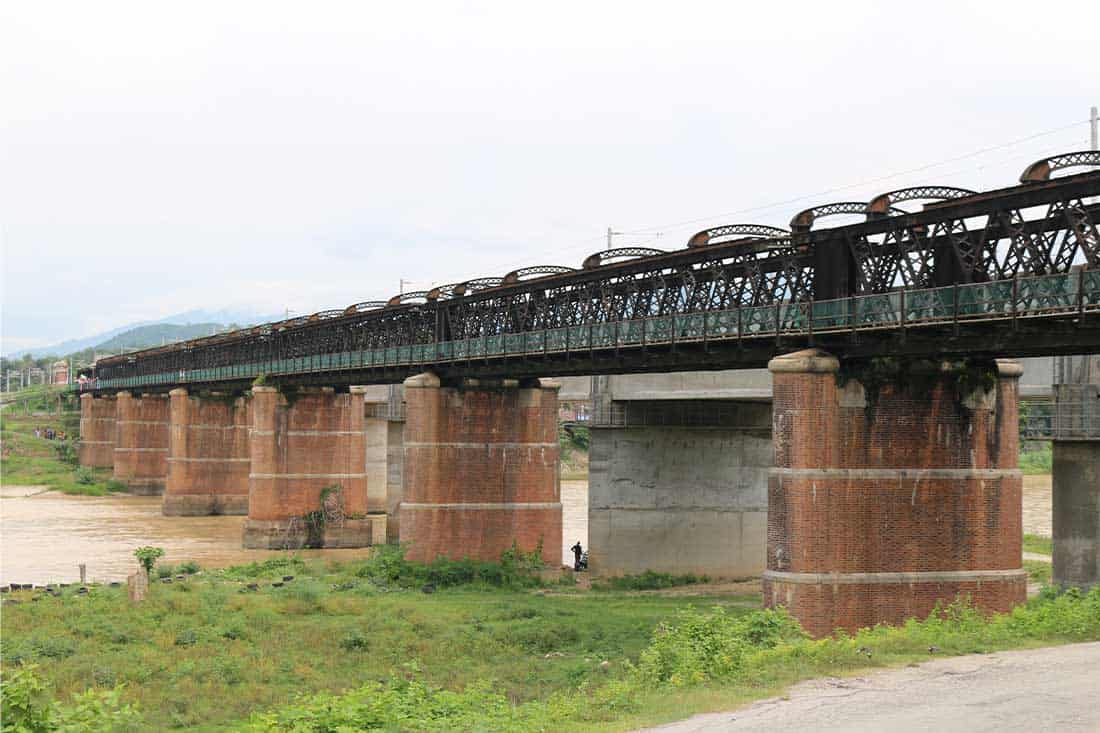

THE HISTORICAL VICTORIA BRIDGE OF KUALA KANGSAR
Victoria Bridge in Karai, Perak, is a historical landmark and one of the oldest bridges in Malaysia. It was constructed between 1897 and 1900, spanning across the Perak River to connect the rail line between Sungai Siput and Kuala Kangsar in the northern region of the country. The bridge was designed as a single-track railway, primarily used to transport natural resources from the interior to Singapore for export.

Karai, the location of the Victoria Bridge, is situated approximately 9 kilometers from the royal town of Kuala Kangsar and about 250 kilometers from Kuala Lumpur. It takes approximately 3 hours to reach Karai from Kuala Lumpur. Some confusion arises regarding the name of the town, as it is sometimes referred to as both Karai and Enggor. The British intended to name it Enggor, inspired by Enggor Street in Singapore, but the local villagers preferred to retain the name Karai. Consequently, the bridge became known as Victoria Bridge in Karai, while the railway station was named Enggor Station.
The discovery of coal in the area during the 1890s significantly impacted Karai, transforming it into a bustling coal mining town. A Chinese planter named Hok Hin Hoh discovered coal while planting rubber trees on a leased plot of land. With the completion of Victoria Bridge, the town experienced prosperity in coal mining between the 1905 and 1930s. As a result, several shop houses were built along the railway station road, serving various purposes such as wholesale rubber trade, sundry shops, eateries, pawnshops, liquor outlets, opium smoking dens, and gambling establishments. Though these pre-war shop houses still stand today, they are no longer engaged in the lively activities of the past.

Initially, the coal concession in Karai was awarded to the Enggor Coal Syndicate Ltd. However, the Enggor mine ceased operation in 1928 due to declining coal prices and demand, attributed to the emergence of petroleum-based technologies.
Before the construction of Victoria Bridge, pontoons were used to transport coal across the Perak River. However, frequent floods caused many pontoons to be washed away. This prompted the administration to build a bridge elevated twelve meters above the river’s surface to avoid future flooding issues. The bridge measures 351 meters in length, with each beam being 305 meters long and 3.6 meters wide. Constructed with steel beams and a six-meter deep concrete foundation, the bridge features six columns elevated twelve meters from the river level. The construction cost was $325,000.

The project was completed in March 1900, making Victoria Bridge fully operational for 102 years until 2002. The engineers responsible for the bridge were G.W. Fryer (Design Engineer) and C.R. Hanson (Resident Engineer), working under the supervision of Happlestone. The bridge is said to bear some resemblance to the famous “Bridge on the River Kwai” and Guillemard Bridge in Kelantan. It was officially inaugurated on 21 March 1900 by Sultan Idris Murshidul Azzam Shah, the 28th Sultan of Perak, during a ceremony attended by Sir Frank Swettenham, the Resident-General for the Federated Malay States, and Sir John Pickersgill Rodger, the acting British Resident for Perak. During the opening ceremony, Sir Frank Swettenham described Victoria Bridge as the largest bridge in the East outside of India. The bridge was named after Queen Victoria, the reigning monarch of the British Empire at that time.

In contemporary times, Victoria Bridge has gained popularity among enthusiasts, especially photographers, for its nostalgic and old-world charm. It stands as a testament to Malaysia’s history and engineering achievements, attracting visitors seeking to experience its unique ambiance and historical significance.
Photo : Credit to Hani Kamal
References :
https://museumvolunteersjmm.com/2021/12/20/victoria-bridge-karai/




